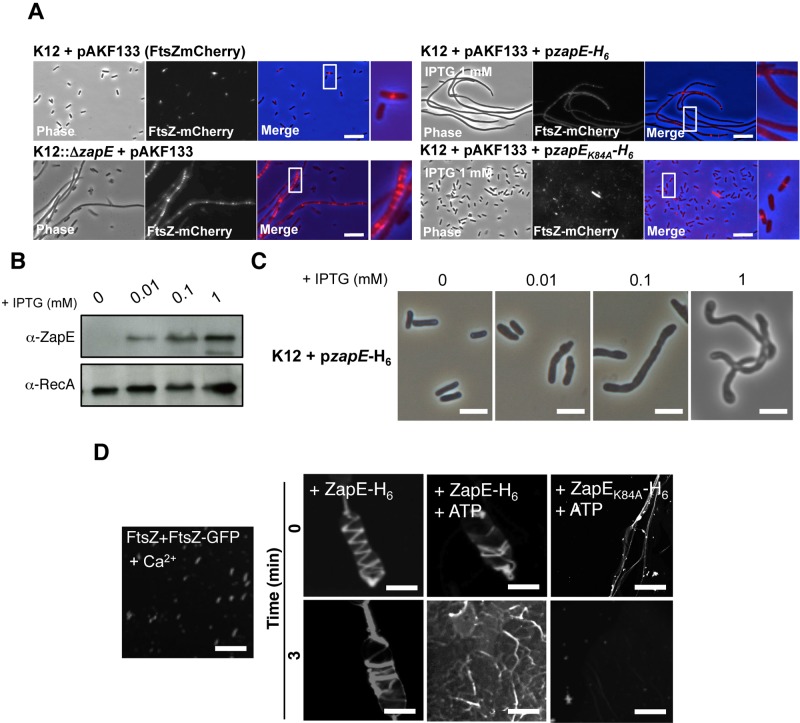FIG 5 .
ZapE level of expression perturbates Z-ring stability and bacterial shape. (A) Effect of zapE inactivation and ZapE or ZapEK84A overexpression on Z-ring stability (FtsZ-mCherry, pAKF133). Bacteria were grown in minimum media at 37°C in the presence of arabinose (0.01%) in addition to IPTG (1 mM) when indicated. Data are representative of the results of four independent observations (see also Fig. S5C in the supplemental material). (B) ZapE-H6 level of expression in strain K12-pzapE-H6 grown in LB at 37°C in the presence of the indicated concentrations of IPTG until an OD600 = 0.5 was reached. The level of expression of ZapE-H6 was assessed by Western blot analysis on bacterial whole extract using a polyclonal α-ZapE antibody. α-RecA was used as a control. (C) Phenotypic characterization of strain K12-pzapE-H6 grown under the conditions described for panel B. These observations are representative of the results of three independent experiments. Bars are 2 µm. (D) Polymerization of FtsZ (10 µM) with FtsZ-GFP (5 µM) in vitro was performed over 3 min, in the presence of 10 mM CaCl2, as described in references 16 and 19. ZapE-H6 or ZapEK84A-H6 (10 µM) was subsequently added to the reaction mixture (t = 0), with ATP added when indicated. Confocal imaging was performed at 0 and 3 min. Data are representative of the results of three independent experiments. Bars are 5 µm.

